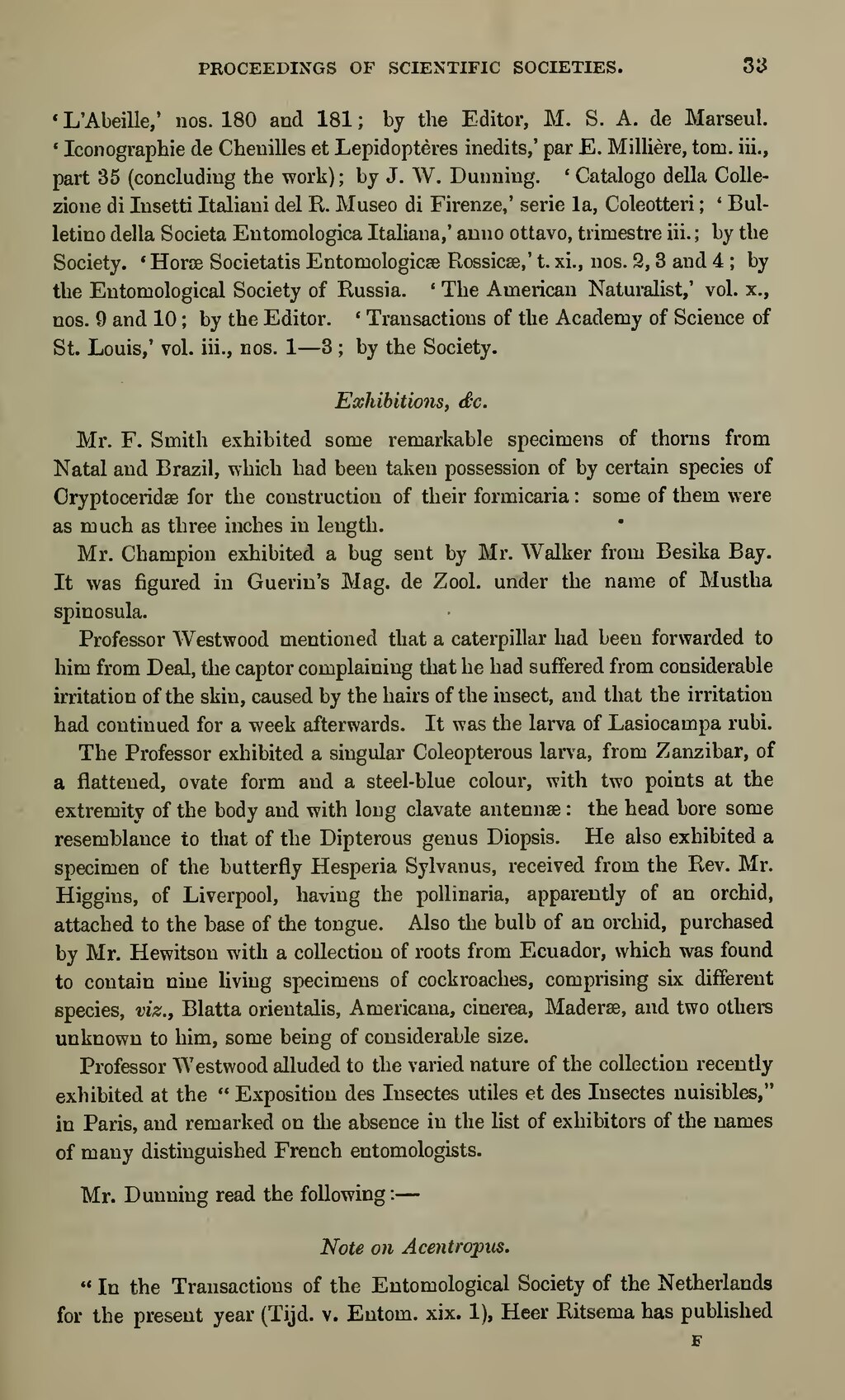'L'Abeille,' nos. 180 and 181; by the Editor, M.S.A. de Marseul. 'Iconographie de Chenilles et Lepidoptères inedits,' par E. Millière, tom. iii., part 35 (concluding the work); by J.W. Dunning. 'Catalogo della Collezione di Insetti Italiani del R. Museo di Firenze,' serie la, Coleotteri; 'Bulletino della Societa Entomologica Italiana,' anno ottavo, trimestre iii.; by the Society. 'Horæ Societatis Entomologicæ Rossicæ,' t. xi., nos. 2, 3 and 4; by the Entomological Society of Russia. 'The American Naturalist,' vol. x., nos. 9 and 10; by the Editor. 'Transactions of the Academy of Science of St. Louis,' vol. iii., nos. 1–3; by the Society.
Exhibitions, &c.
Mr. F. Smith exhibited some remarkable specimens of thorns from Natal and Brazil, which had been taken possession of by certain species of Cryptoceridæ for the construction of their formicaria: some of them were as much as three inches in length.
Mr. Champion exhibited a bug sent by Mr. Walker from Besika Bay. It was figured in Guerin's Mag. de Zool. under the name of Mustha spinosula.
Professor Westwood mentioned that a caterpillar had been forwarded to him from Deal, the captor complaining that he had suffered from considerable irritation of the skin, caused by the hairs of the insect, and that the irritation had continued for a week afterwards. It was the larva of Lasiocampa rubi.
The Professor exhibited a singular Coleopterous larva, from Zanzibar, of a flattened, ovate form and a steel-blue colour, with two points at the extremity of the body and with long clavate antennæ: the head bore some resemblance to that of the Dipterous genus Diopsis. He also exhibited a specimen of the butterfly Hesperia Sylvanus, received from the Rev. Mr. Higgins, of Liverpool, having the pollinaria, apparently of an orchid, attached to the base of the tongue. Also the bulb of an orchid, purchased by Mr. Hewitson with a collection of roots from Ecuador, which was found to contain nine living specimens of cockroaches, comprising six different species, viz., Blatta orientalis, Americana, cinerea, Maderæ, and two others unknown to him, some being of considerable size.
Professor Westwood alluded to the varied nature of the collection recently exhibited at the "Exposition des Insectes utiles et des Insectes nuisibles," in Paris, and remarked on the absence in the list of exhibitors of the names of many distinguished French entomologists.
Mr. Dunning read the following:—
Note on Acentropus.
"In the Transactions of the Entomological Society of the Netherlands for the present year (Tijd. v. Entom. xix. 1), Heer Ritsema has published
f
